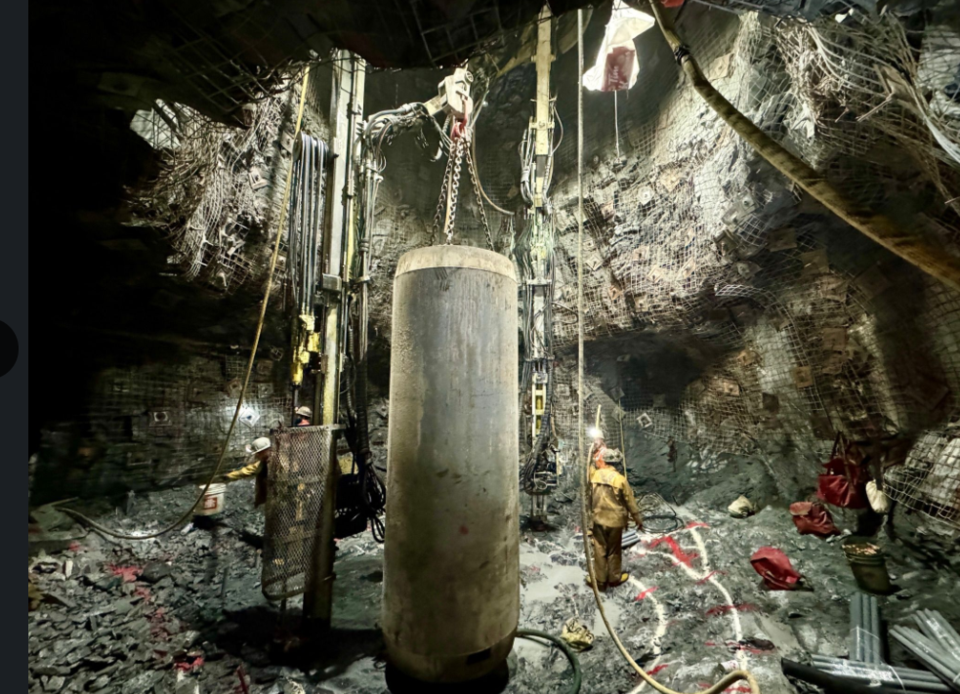Alamos Gold continues to reap the rewards of its investments in exploration at its Island Gold Mine, outside Dubreuilville.
The prolific high-grade mine continues on a strong development track in marking the 12th consecutive year of mineral growth.
As of the end of December, gold reserves there jumped 32 per cent, over 2023, to 2.3 million ounces. Grades increased 11 per cent to average of 11.40 grams per tonne, the Toronto gold company said in a news release this week.
Alamos delivered an updated mineral count on all its mining properties in Canada, the U.S. and Mexico. It shows an overall 31 per cent across the board with total reserves coming in at 14 million ounces.
That jump is attributed to new gold zones found at Island Gold and from Alamos' acquisition last year of the neighbouring Magino Mine from Argonaut Gold.
Alamos also posted its year-end operating and financials this week, showing a record year of performance in 2024. Total gold production went up by 7 per cent to 567,000 ounces, a company record for the second year in a row. Cash flow was also a record at US$272 million.
Island Gold produced 155,000 ounces in 2024, up 18 per cent from the previous year. The mine continues to show untapped potential.
The company said the deposit remains open laterally and at depth with several new high-grade zones defined that should lengthen its mining life beyond 18 years.
Nearby at Magino, the reserve on this open-pit mine is estimated at 2.0 million ounces, grading 0.91 grams per tonne. That’s down from the 2.3 million ounces once estimated by Argonaut. This is the first reserve estimate for Magino under the Alamos flag.
With Magino in the fold, Alamos has taken to calling this area the Island Gold District. The two mines are being integrated into one mining complex as a kind of hub-and-spoke operating model. Two mines will feed one centralized processing mill that's already running at the Magino site.
To sustain mining into the future, the Island Gold District is drawing $27 million from the Alamos 2025 budget to explore and define reserves and resources in and around the two mines and for regional work, including scoping out the historic Cline and Edwards mines, seven kilometres to the northeast.
At Magino, the exploration focus will be on picking up on the trail of gold to the east of the pit. Before acquisition, drilling there had been limited due to the property line shared with Island Gold.
Alamos maintains it has big plans for the area.
Higher gold grades at Island Gold will support higher gold production over the long run, the company said.
These new gold numbers will be folded into a new life of mine plan, for both Island Gold and Magino, expected to be out sometime in the middle of the year. That will be followed by an expansion study in the fourth quarter.
Given their success in finding new gold zones, Alamos has already been preparing for that eventuality with construction on a new production shaft well underway to support a third wave of underground expansion at Island Gold.
“Our significant investment in exploration continues to drive value across our asset base with another substantial increase in mineral reserves, marking the sixth consecutive year of growth,” said company president-CEO John McCluskey in a statement.
“We also delivered another year of growth at Island Gold, at considerably higher reserve and resource grades. This growth and increase in grades will form the basis for the Island Gold District Life of Mine Plan and Expansion Study to be released later this year. We expect both will outline a larger, and significantly more valuable operation.”
Alamos’ other mine in Ontario is the Young-Davidson Mine, outside Matachewan. Gold reserves there decreased 7 per cent to 3 million ounces, with a slightly lower grade of 2.26 grams per tonne.
In 2024, Young-Davidson produced 174,000 ounces and record cash flow of $140.9 million.
To secure its future, Alamos plans on spending $11 million on exploration on the property this year to better define a previously explored mineral block. It contains an estimated 70,000 ounces of gold, grading at 3.40 grams per tonne, in the inferred category.
Young-Davidson has a gold reserve of 14 years. The company said the deposit remains open deeper down and to the west. With new zones being identified, Alamos said “there is excellent potential to further extend its mineral reserve life.”




